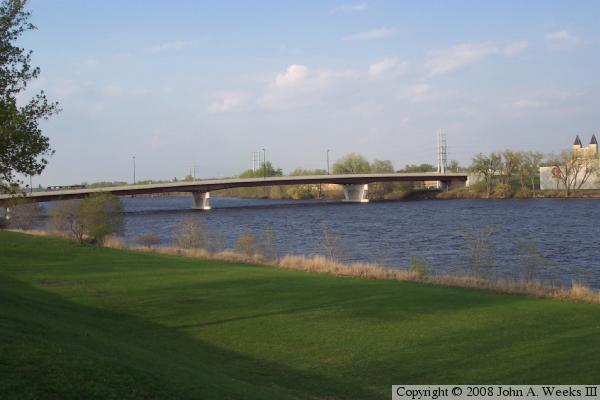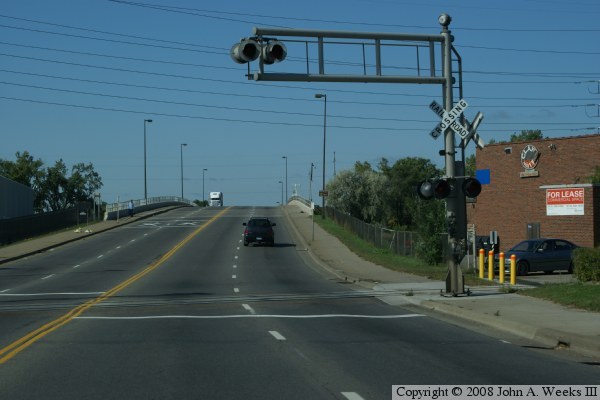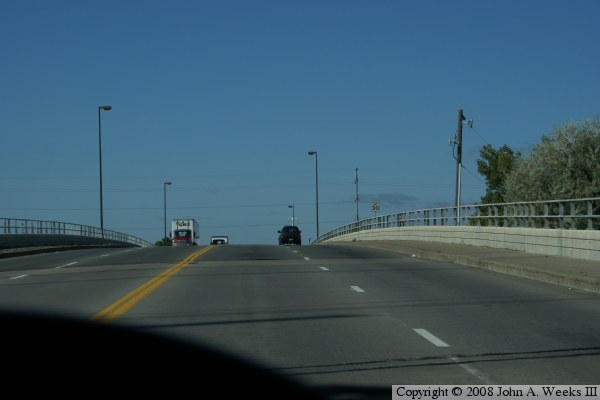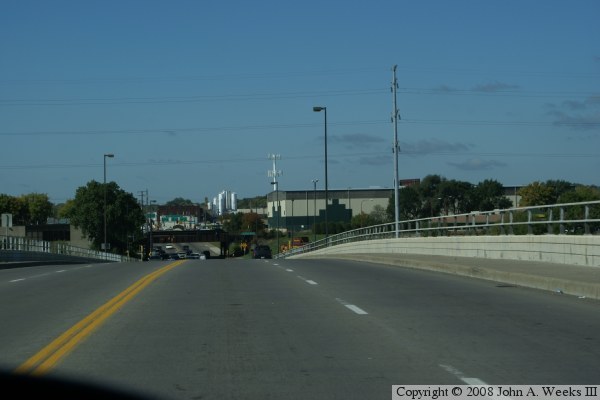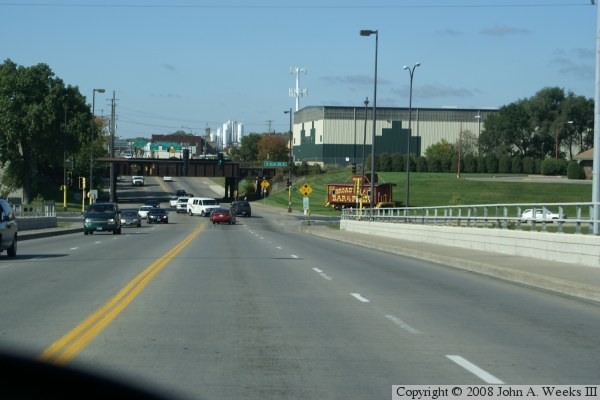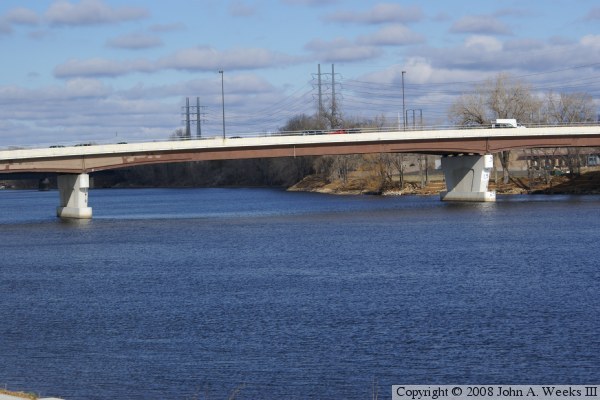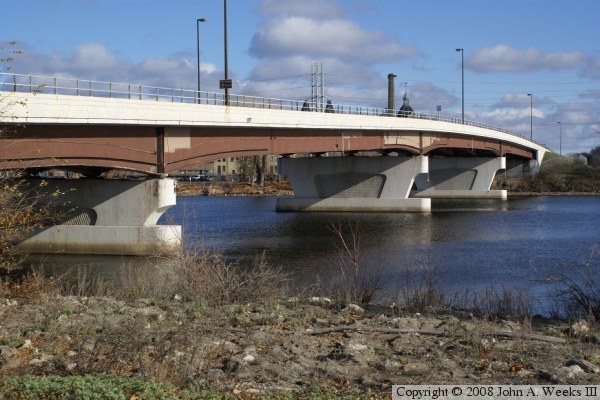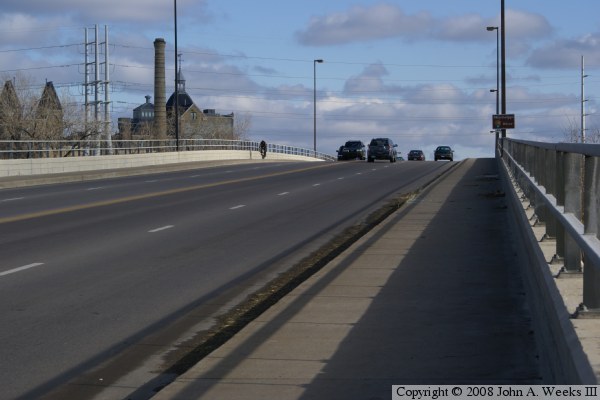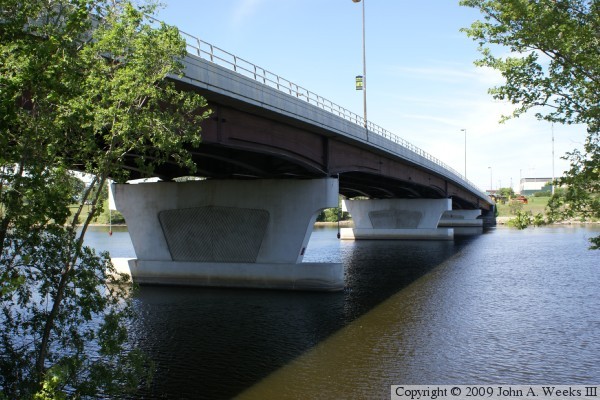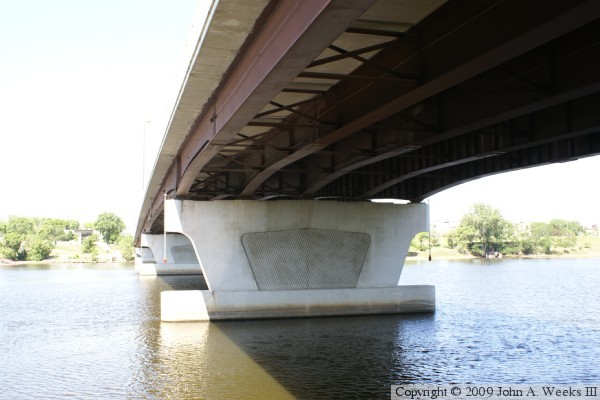The first crossing at this location was a wooden bridge built in
1857. That structure washed away in a flood during 1859. A new
bridge was built 28 years later, opening in 1887. It consisted of
four Pratt style truss spans. That bridge was raised in 1950 to
allow small tow boats and barges to navigate the river in north
Minneapolis. Traffic levels and truck weights made the 1887
bridge obsolete, and it was closed and demolished in 1985.
One section of the 1887 bridge still survives. It was floated downriver,
and installed over the backchannel of the Mississippi River to carry
Merriam Street between Nicollet Island and the north shore of the river
adjacent to Saint Anthony Main.
The current bridge opened in the summer of 1987. It is a very generic
looking modern steel girder bridge with a concrete deck. It has little
in the way of decorative features. In fact, about the only ornamentation
on the structure are the tapered concrete piers. The bridge, however,
has a natural grace. Its thin lines and the broad river channel combine
to give the bridge an appearance of elegant simplicity.
The Broadway Avenue Bridge sits at a notable location. The 45th parallel
crosses the Mississippi River about 290 feet north of the bridge. That
means that the bridge is almost exactly halfway between the equator and
the north pole.
The photo above is a profile view of the bridge taken from the West
River Parkway just south of the structure. The photo below is the
west end of the bridge as viewed from the intersection of West River
Parkway and Broadway Avenue.
The photo above is the first of four photos showing a typical bridge
crossing heading west from the east side of the Mississippi River. In
this photo, we are starting up the hill towards the east end of
the bridge. In the photo below, we are entering the east end of the bridge.
The photo above is a view from the peak of the hump over the main
navigation channel. The land on each side of the river is relatively
low, but the channel span has to be high enough to allow tow boats to
pass under the bridge structure. In the photo below, we are nearing
the west end of the bridge. Note the railroad caboose in dip at the
bottom of the hill. That caboose serves as an advertising sign for
the Broadway Pizza restaurant.
The photo above is view of the entire Broadway Avenue bridge taken from
the riverfront park on the west side of the river. The photo below is a
close view of the main channel of the Mississippi River.
The photo above shows the west abutment of the bridge, and the regional
trail that crosses under the bridge structure. Trail users need to be
careful since the headroom is relatively low under the bridge. The photo
below is a view of the bridge from the riverfront.
The photo above is a view of the details in the concrete and steel work.
While the steel girders appear to curve outward, that is an optical illusion.
The photo below is a view of the bridge looking down the downstream
side of the bridge from river level.
The photo above is a view of the bridge from an overlook that is at
bridge level. The photo below is a view of the bridge deck from the
sidewalk. While a bit hard to see in these photos, the 2008 photos
show that a Mississippi River street sign has been installed on street
light poles in each direction, something that is not present in the
2006 photos at the top of the page. These signs feature a National Park
Service logo, and were paid for by the park service as part of the
build-out of the Mississippi National River and Recreation Area.
These two photos are views of the bridge from the east side of the
Mississippi River. The photo above is the north face of the bridge. The
photo below is the south face of the bridge.

